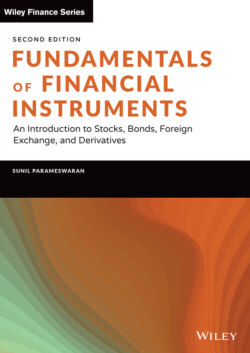Читать книгу Fundamentals of Financial Instruments - Sunil K. Parameswaran - Страница 84
На сайте Литреса книга снята с продажи.
EXAMPLE 2.8
ОглавлениеING Bank is quoting a rate of 8% per annum compounded annually on deposits placed with it, whereas HSBC is quoting 7.80% per annum compounded monthly on funds deposited with it. A naïve investor may be tempted to conclude that ING is offering better returns, as its quoted rate is higher. It is important to note, however, that the compounding frequencies are different. While ING is compounding on an annual basis, HSBC is compounding every month.
From our earlier discussion, we know that since ING is compounding only once a year, the effective rate offered by it is the same as the rate quoted by it, which is 8% per annum. However, since HSBC is compounding on a monthly basis, its effective rate will obviously be greater than the rate quoted by it. The issue is, is the effective rate greater than 8% per annum?
7.80% per annum corresponds to per month. Consequently, if an investor were to deposit $1 with HSBC for a period of one year, or 12 months, the terminal value would be
Consequently, a rate of 7.80% per annum compounded monthly is equivalent to receiving a rate of 8.085% with annual compounding. The phrase effective annual rate connotes that effectively the investor who deposits with HSBC receives a rate of 8.085% compounded on an annual basis.
Thus, when the frequencies of compounding are different, comparisons between alternative investments ought to be based on the effective rates of interest and not on the nominal rates. In our case, an investor who is contemplating a deposit of say $10,000 for a year would choose to invest with HSBC despite the fact that its quoted or nominal rate is lower.
Note 2: It must be remembered that the distinction between nominal and effective rates is of relevance only when compound interest is being paid. The concept is of no consequence if simple interest is being paid.
